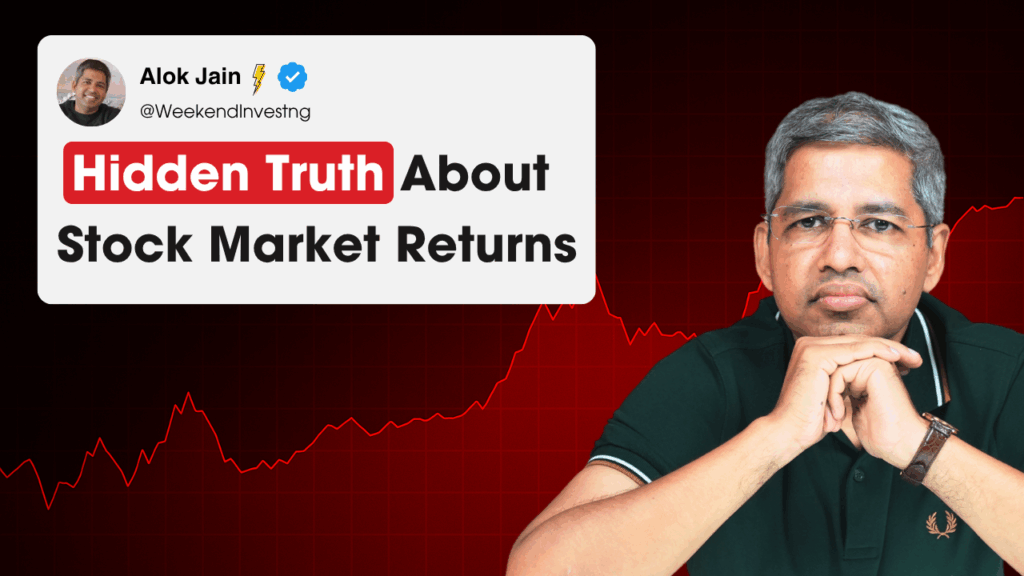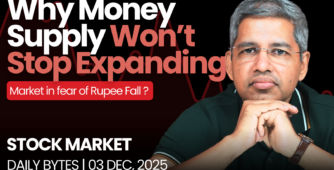Where is the market headed?
It was a relatively subdued day in the market, with no major movements or breaking news to steer the indices dramatically in either direction. While tomorrow’s expiry might bring in some volatility, as of today, the sentiment remains neutral. There’s no significant domestic or global catalyst poised to shift the market in a decisive way—unless, of course, something unexpected emerges from the US or geopolitical developments stir investor emotions.
Despite this lull, it’s important to recognize the resilience the market has shown since the pullback last month. Markets have managed to stay close to their highs, which is, in itself, a bullish indicator. Looking ahead, a key potential trigger could be the anticipated RBI rate cut in June. Most corporate earnings have already been declared, reducing the chances of any surprise news influencing market direction in the immediate term.
Market Overview
The Nifty stayed within a tight range, marking a marginal 0.3% decline. This came even after strong performance in the US markets overnight. A rising dollar index didn’t help sentiments either.
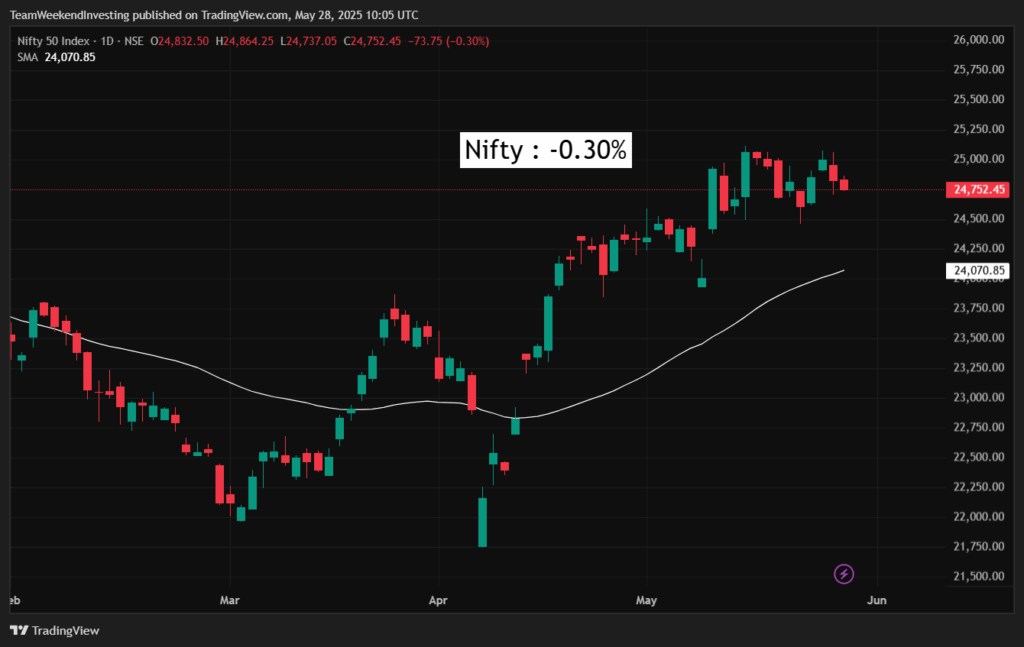
Nifty Next 50
Nifty Junior mirrored Nifty’s move with a similar 0.3% drop, and has been largely flat over the past week.
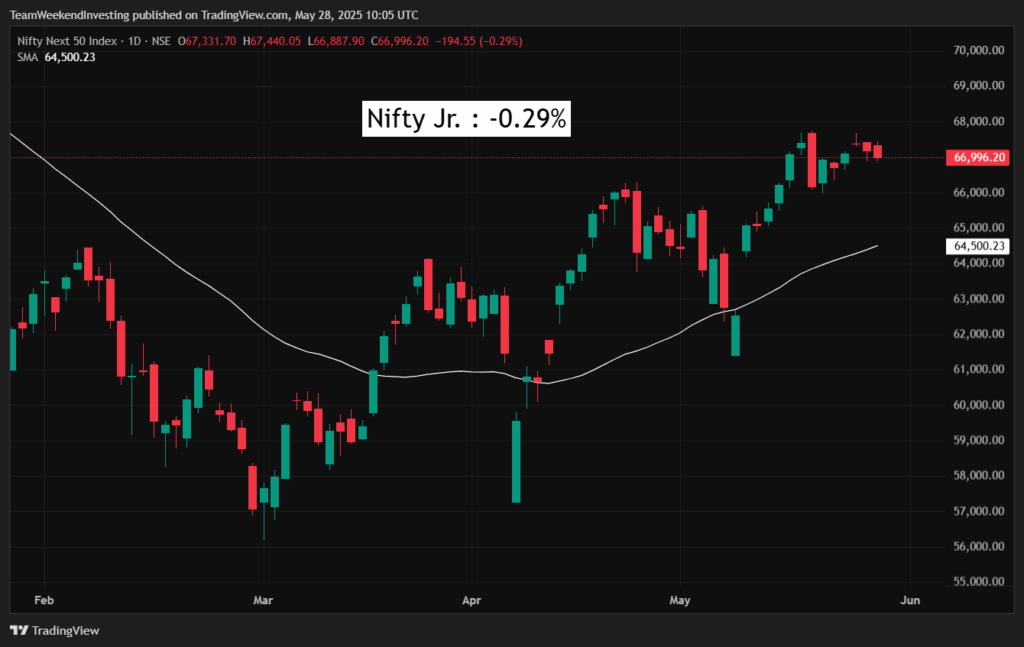
Nifty Mid and Small Cap
Mid-caps and small caps were also listless, with negligible moves of 0.05% and 0.4% respectively.
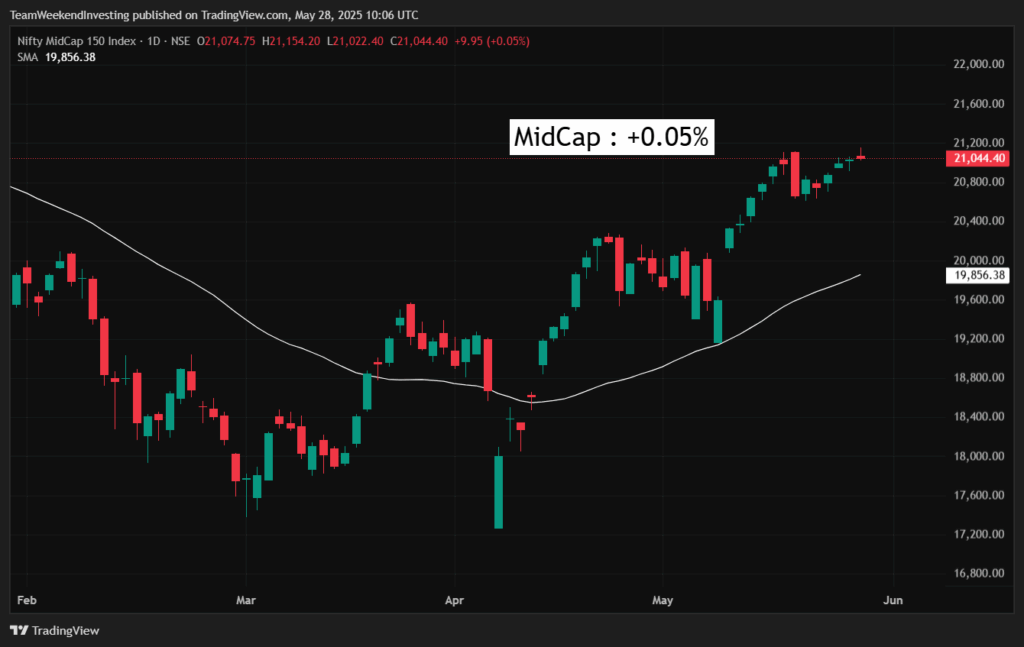
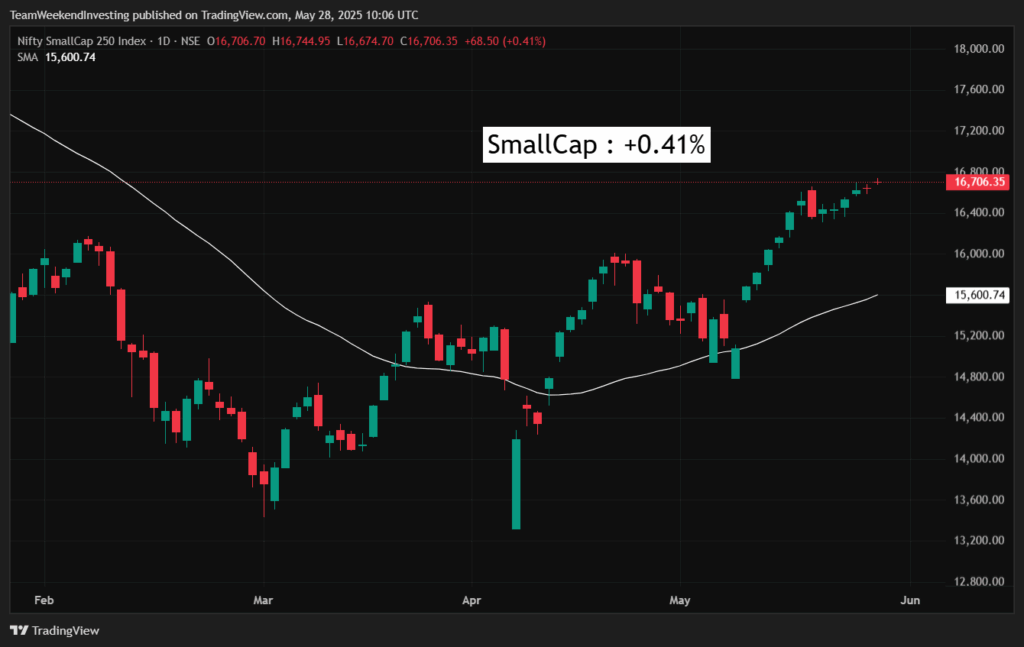
Bank Nifty
Bank Nifty inched up by 0.12%, continuing its consolidation phase. This sector may be gearing up for a significant move, potentially aligning with the upcoming rate decision.

GOLD
Gold remained the highlight among asset classes, jumping 0.72% to INR 9,666 per gram. The gold chart continues to look strong and bullish, and there’s a growing sense that it may soon breach the INR 100,000 mark per 10 grams./
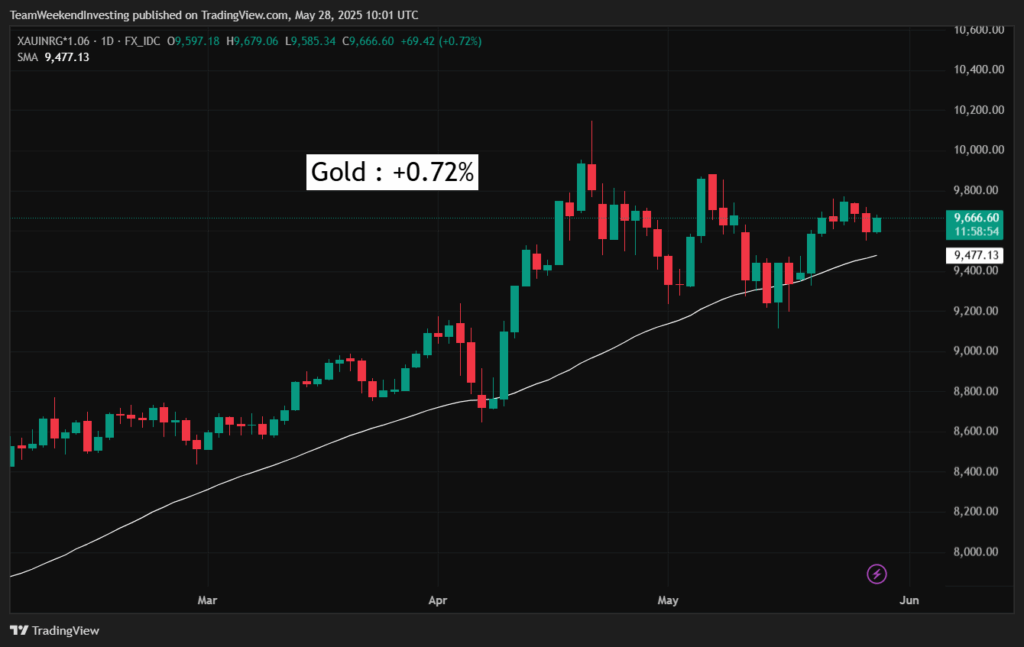
Advance Decline Ratio
The market breadth was evenly split, with 233 advances and 266 declines, pointing again to a lack of decisive momentum.
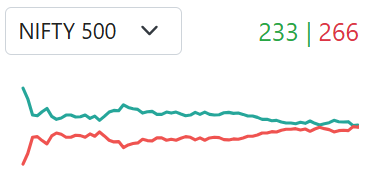
Heat Maps
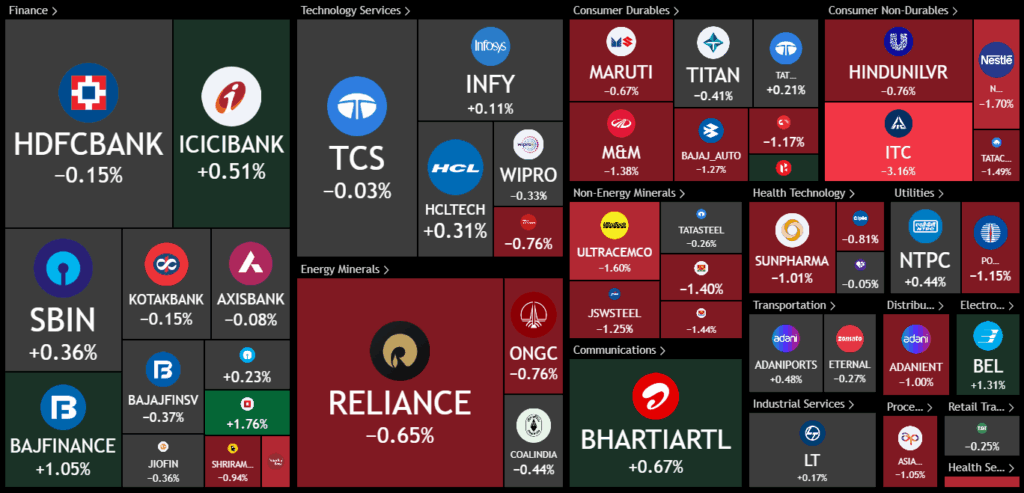
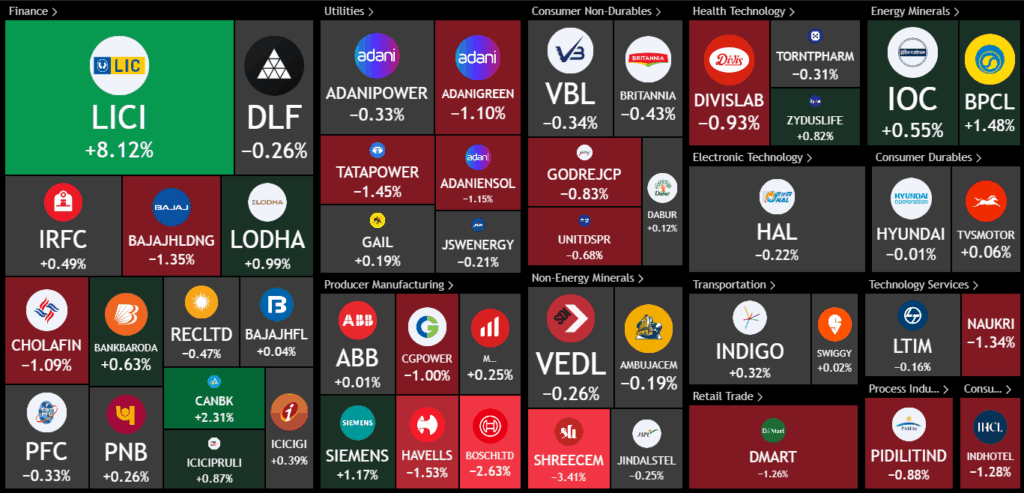
Sectoral Overview
On the sectoral front, FMCG stocks bore the brunt of today’s selling pressure, falling 1.5%, mainly due to ITC’s 3% drop after BAT hinted at reducing its stake—a rumor that surfaces almost every year. Other FMCG giants like Nestle, Tata Consumer, and Hindustan Unilever also saw declines. The consumption, auto, pharma, metals, and commodity sectors were similarly under pressure. On the flip side, Nifty Media, PSU Banks, and Defense were top gainers, each registering gains close to 1%. Notably, defense stocks are not even pausing for profit booking—highlighting the strength and momentum in this space.
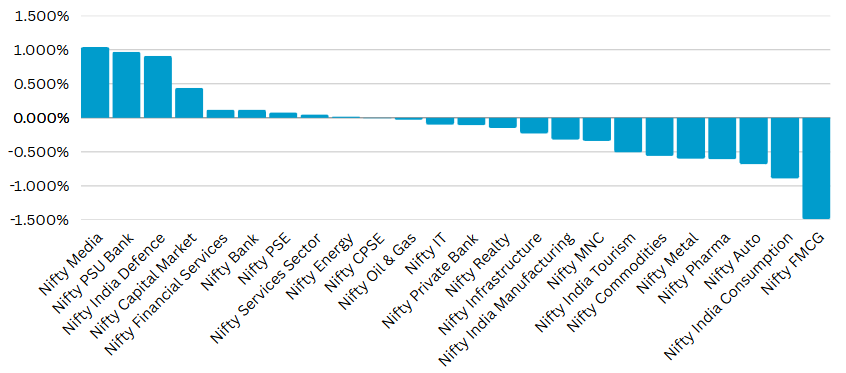
Zooming out to the weekly performance, the defense sector emerged as the clear leader with a 5.3% gain. Media followed with a 3% rise, and PSU Banks were up 1.3%. Capital Markets also did decently with a 0.86% climb. On the losing side were Pharma, FMCG, and Tourism stocks.
Sector of the Day
Nifty Media Index
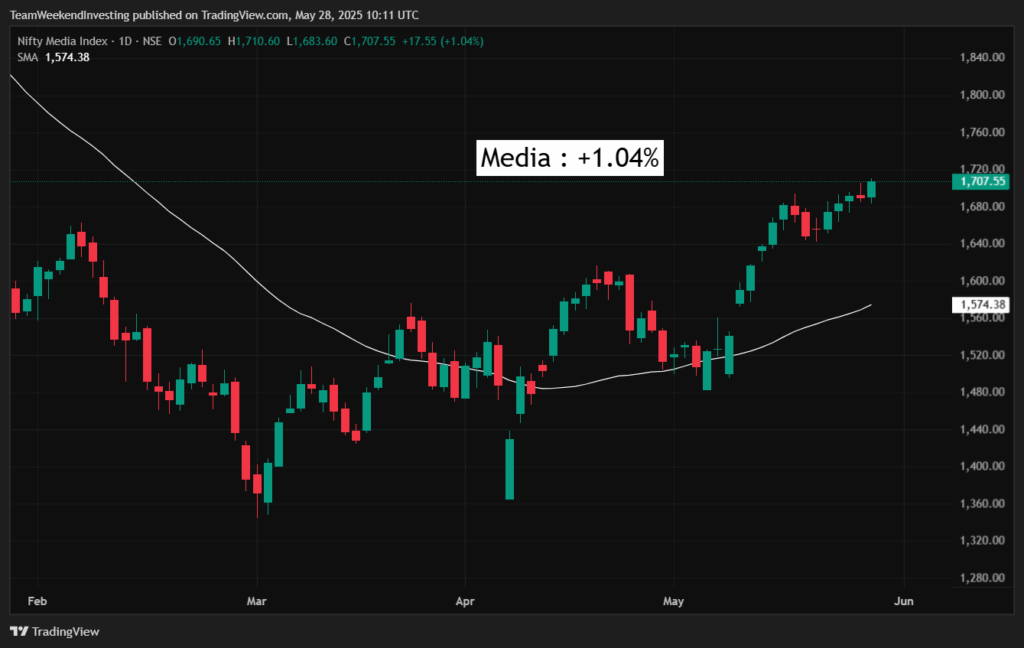
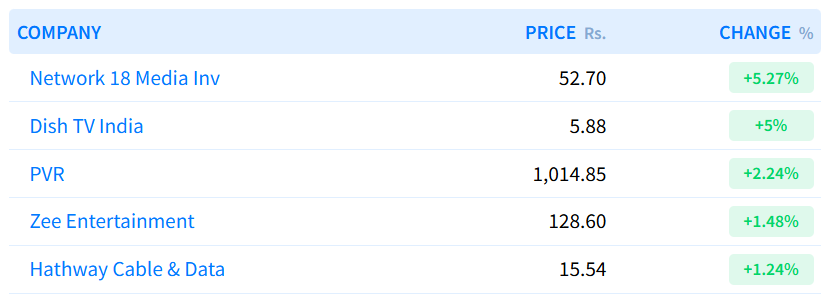
Nifty FMCG Index

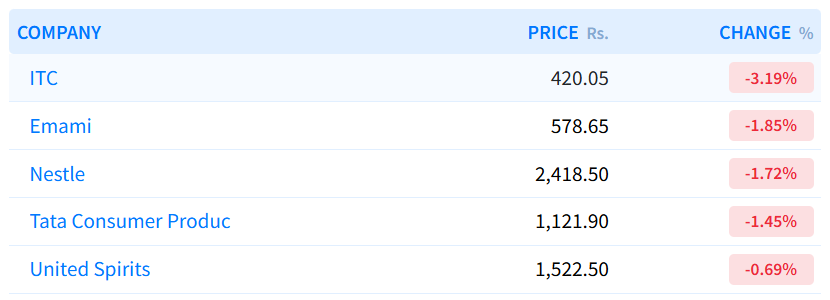
Story of the Day: The Hidden Truth About Stock Market Returns
When newcomers first hear about the stock market, it’s often through stories of rapid wealth creation, leading to the belief that it’s a straightforward way to mint money. But this misconception can be dangerous. While disciplined long-term investors who follow a strategy can indeed succeed, many others fall prey to emotional decision-making and end up exiting the market in frustration after losses.
Many investors join during the euphoric phase of a market cycle, with no strategy in place, relying instead on tips from friends or TV pundits. When markets inevitably correct, these investors often sell at a loss and conclude that stock investing is not for them. This pattern of emotional reaction, lack of planning, and unrealistic expectations is all too common.
The journey to becoming a confident and successful investor takes time—sometimes five years, sometimes twenty. But with consistent discipline and a well-thought-out approach, one can eventually gain the experience and composure needed to thrive.
It’s vital to understand that markets don’t move in a straight line. Take the rally from 2020 as an example: the Sensex soared from 25,000 to 85,000, making it seem deceptively easy to triple one’s money.

But this period was driven by unprecedented liquidity, and may not be indicative of future patterns. Investors are currently conditioned to believe that every 10–15% correction is a buying opportunity, but that’s not always the case.
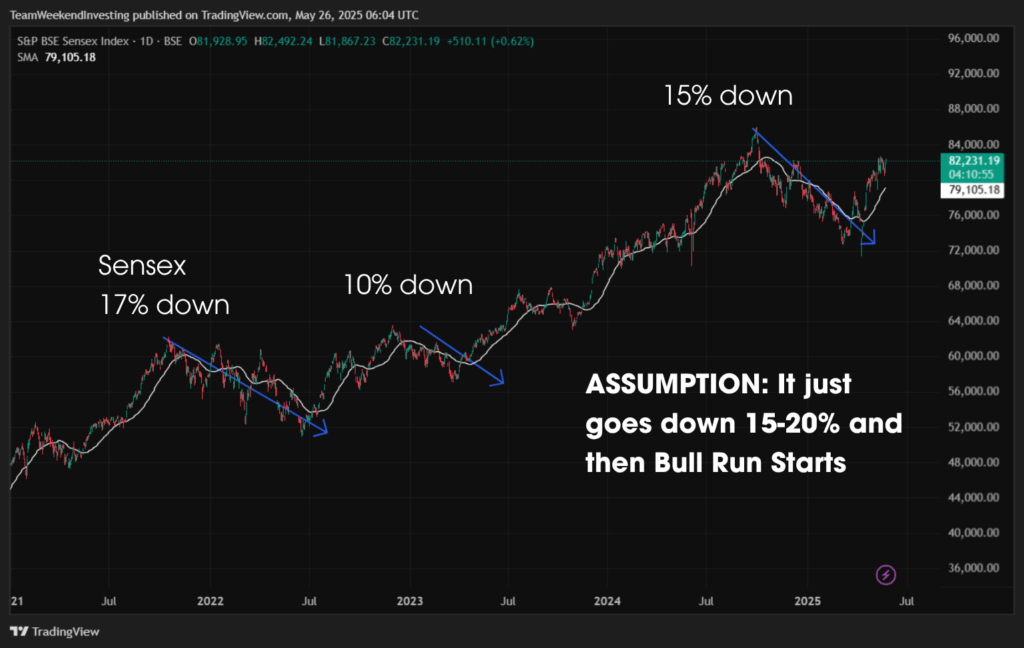
History tells us that long periods of flat or negative returns are part of the market cycle. For instance, post the 1992 Harshad Mehta rally, the Sensex remained largely stagnant until 2003, except for brief spikes during the dot-com bubble.
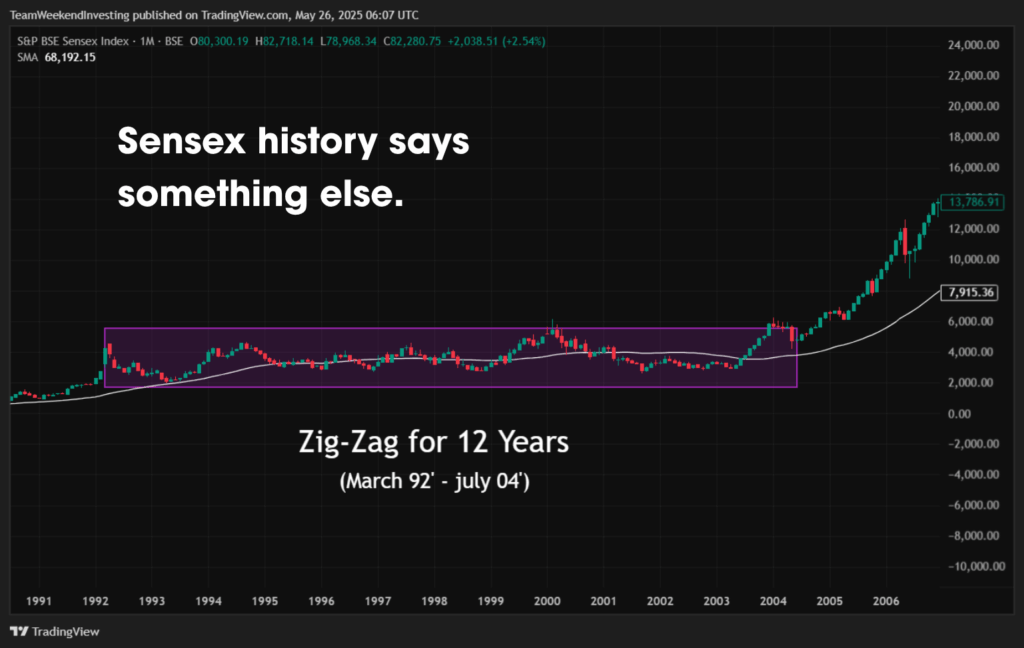
Similarly, the Global Financial Crisis saw the indices fall over 65%, a reminder that deep corrections are always possible.
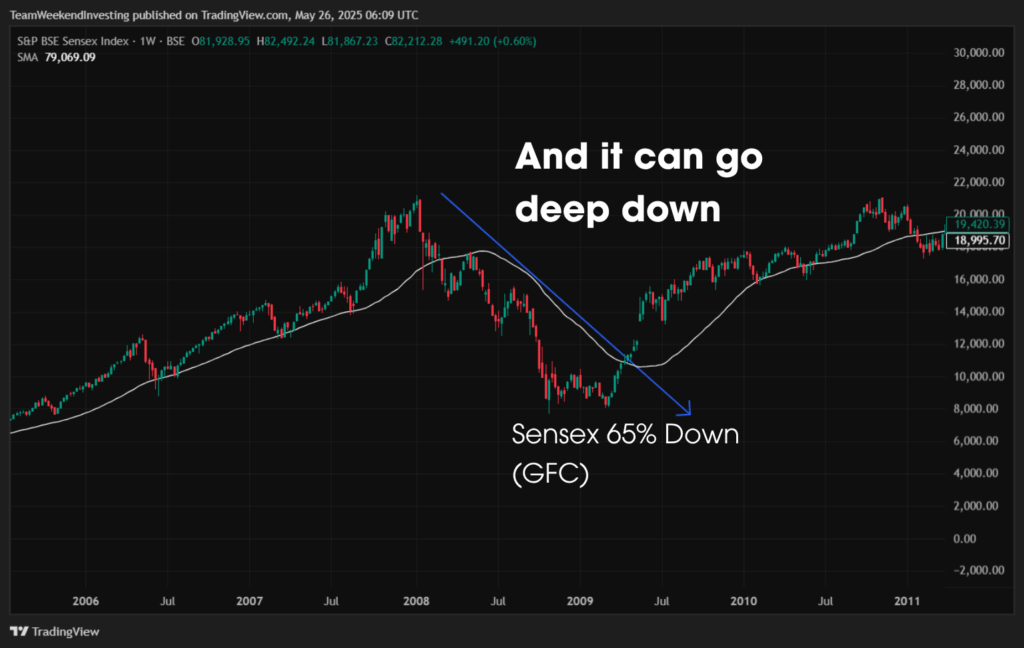
Markets are shaped by unpredictable macro and geopolitical events. Consider Japan’s Nikkei: after a meteoric rise of 40x from the 1960s to 1990, it saw no returns for the next 35 years.
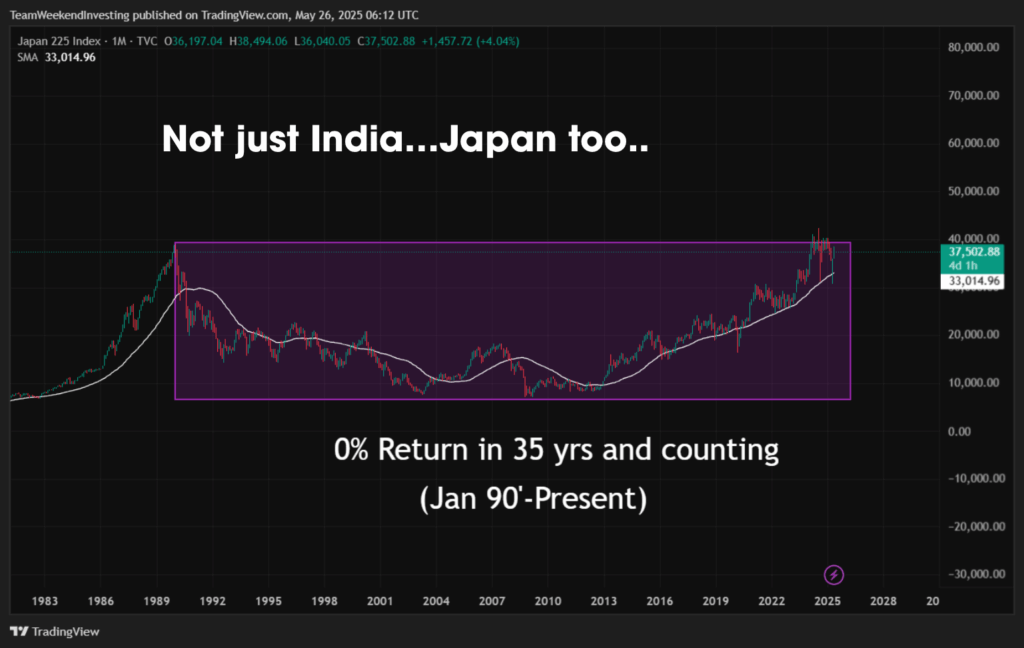
Even China and Hong Kong markets have delivered negligible returns in the last 15–17 years despite economic growth. Assuming India is immune to such stagnation is overly optimistic. While India has robust growth potential, it’s not immune to extended periods of underperformance.
Recency bias, or the tendency to expect recent trends to continue, can be dangerous. Investors must remember that past returns, especially from recent years, don’t guarantee future performance. Events like the COVID-19 crash and subsequent rally, or the Russia-Ukraine conflict followed by unexpected market strength, highlight how unpredictable market movements can be.
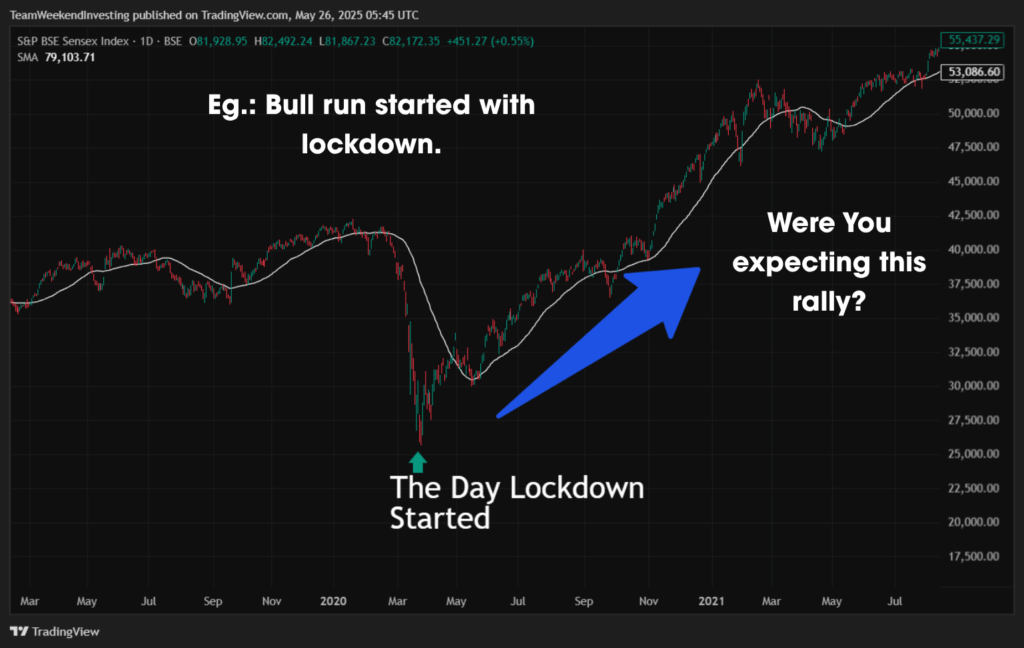
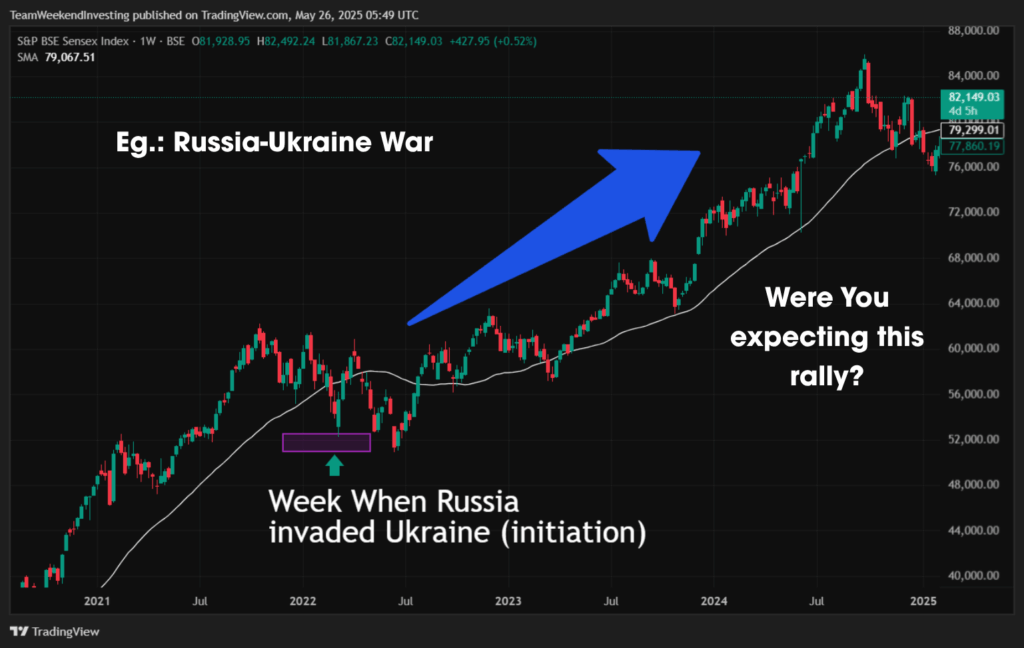
To truly succeed, investors need to remove emotions from their decision-making process. That’s the core principle of structured, non-discretionary investing. Rather than reacting emotionally, decisions should be driven by a predefined strategy that dictates when to buy or sell. This helps investors avoid pitfalls caused by overconfidence or fear.
In conclusion, the market will always try to catch you off guard. Your job as an investor is to stay grounded, expect the unexpected, and stick to a disciplined, emotion-free strategy. Think long-term, stay educated, and avoid being swayed by short-term noise. Tell us in the comments: have emotions helped or hurt your investing journey?
WeekendInvesting launches – The Momentum Podcast
This episode of THE MOMENTUM PODCAST features Manubhav, a third-generation real estate professional, sharing his unique journey navigating both worlds.
Discover:
✅ FROM PROPERTY TO PORTFOLIO: Manubhav’s transition from his family’s established real estate business to exploring equity investments.
✅ MARKET WISDOM: His candid experiences with market swings, including COVID-19’s impact on his SIPs, and lessons learned from F&O and smallcase.
✅ THE BIG COMPARISON: A fascinating look at real estate vs. equity returns, featuring real-world numbers from his family’s 40-year property investment.
✅ UNCOMMON INSIGHTS: Why gold is a family favorite and the surprising state of equity investing in smaller Indian towns.

